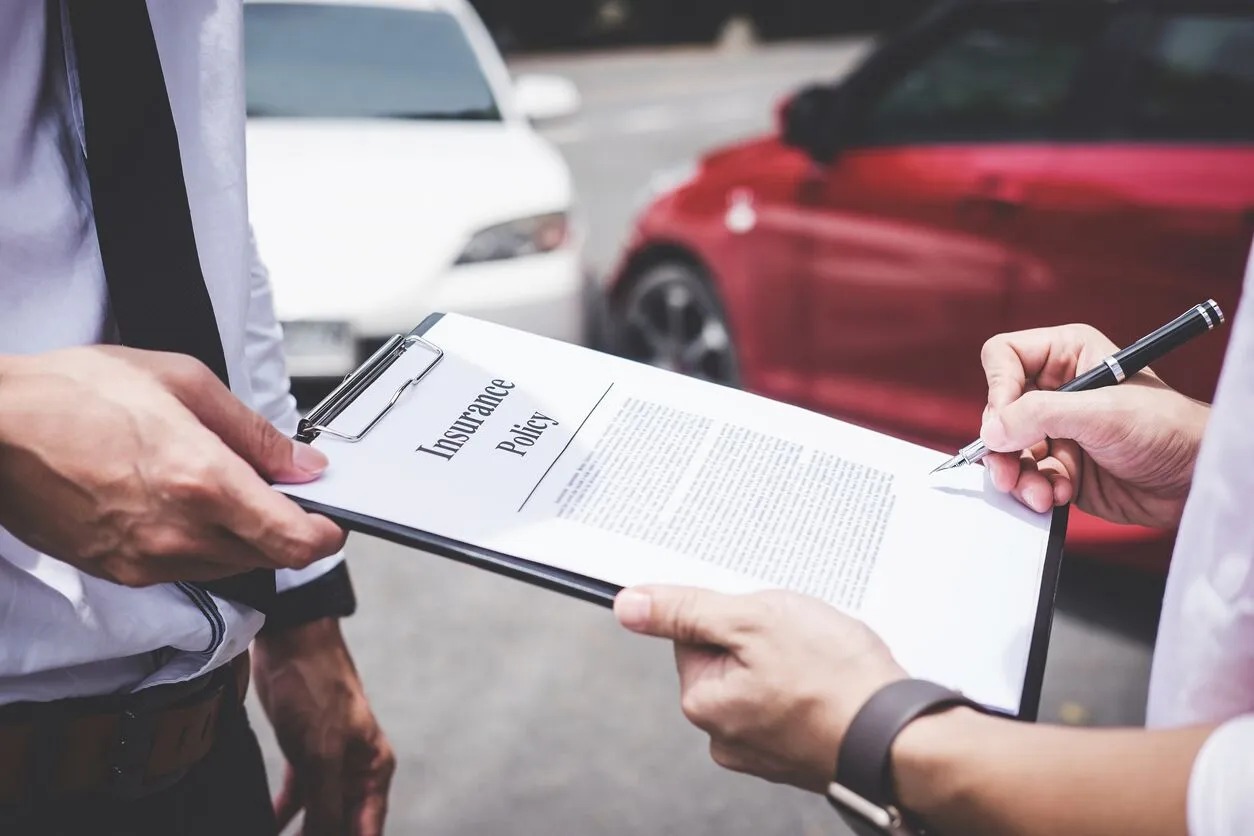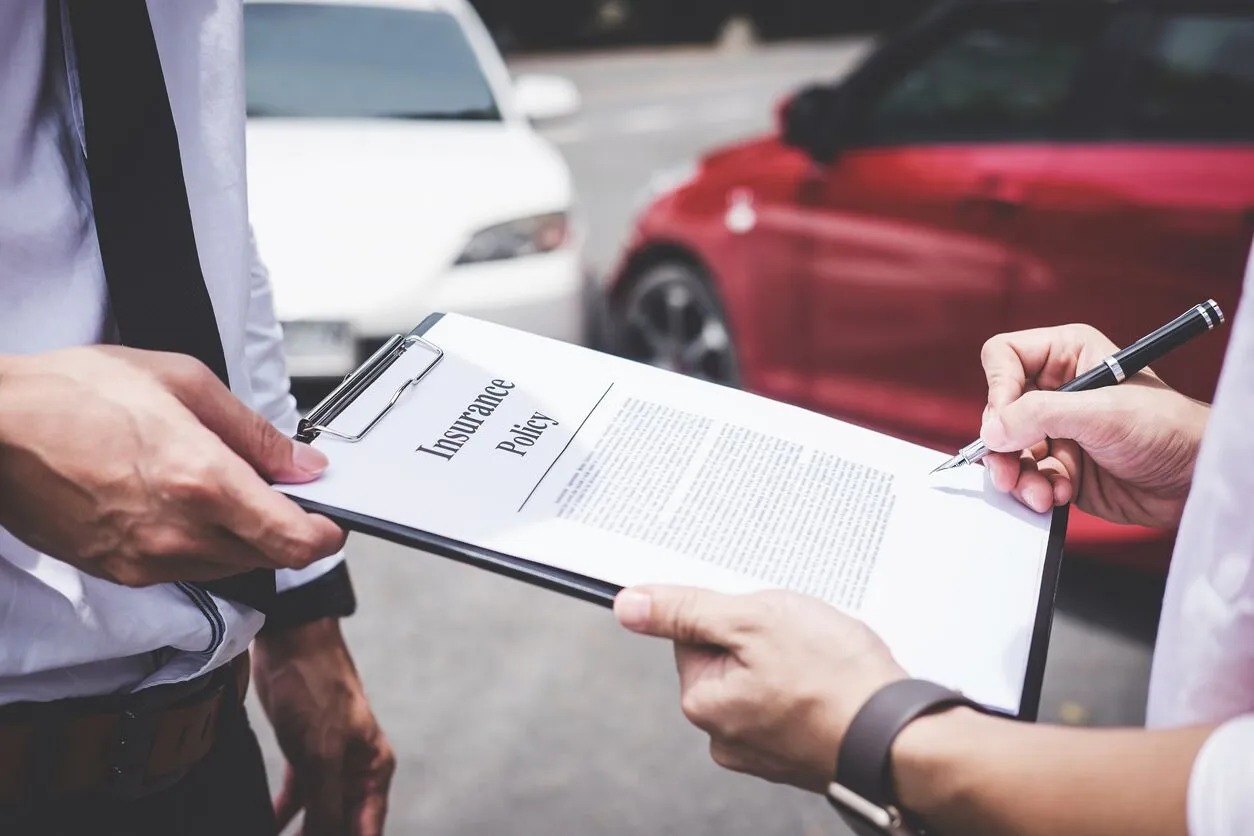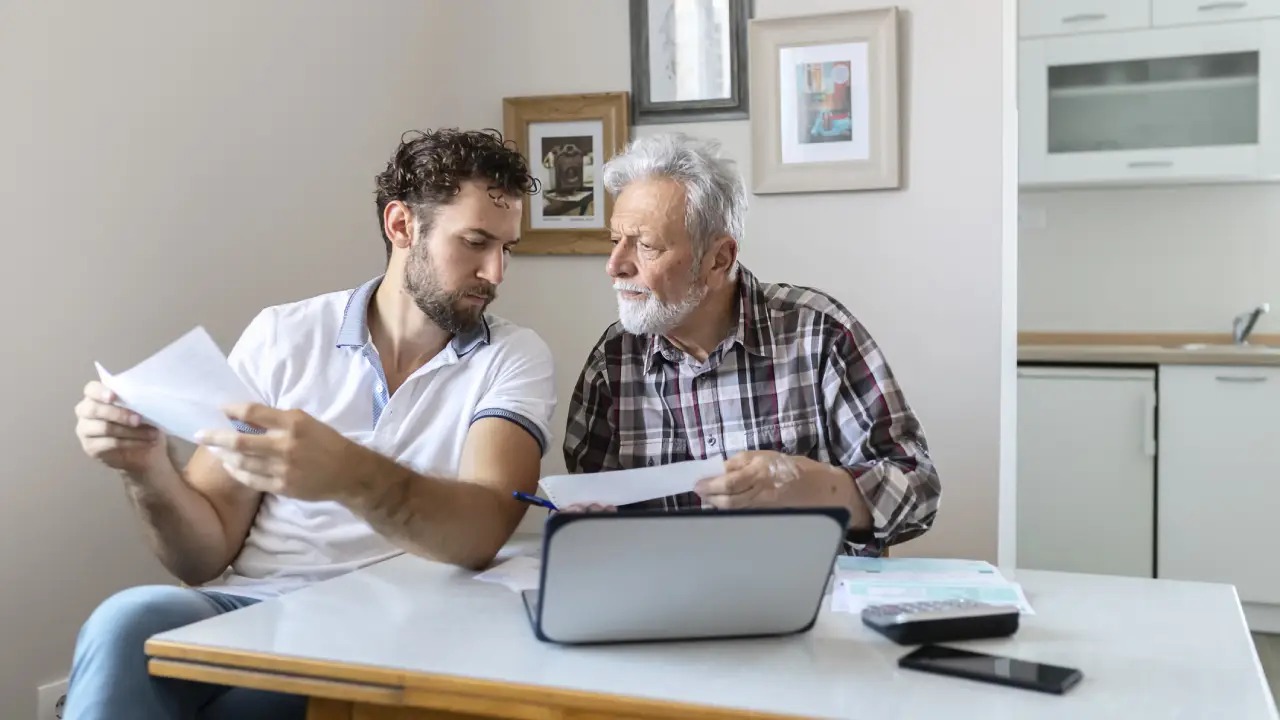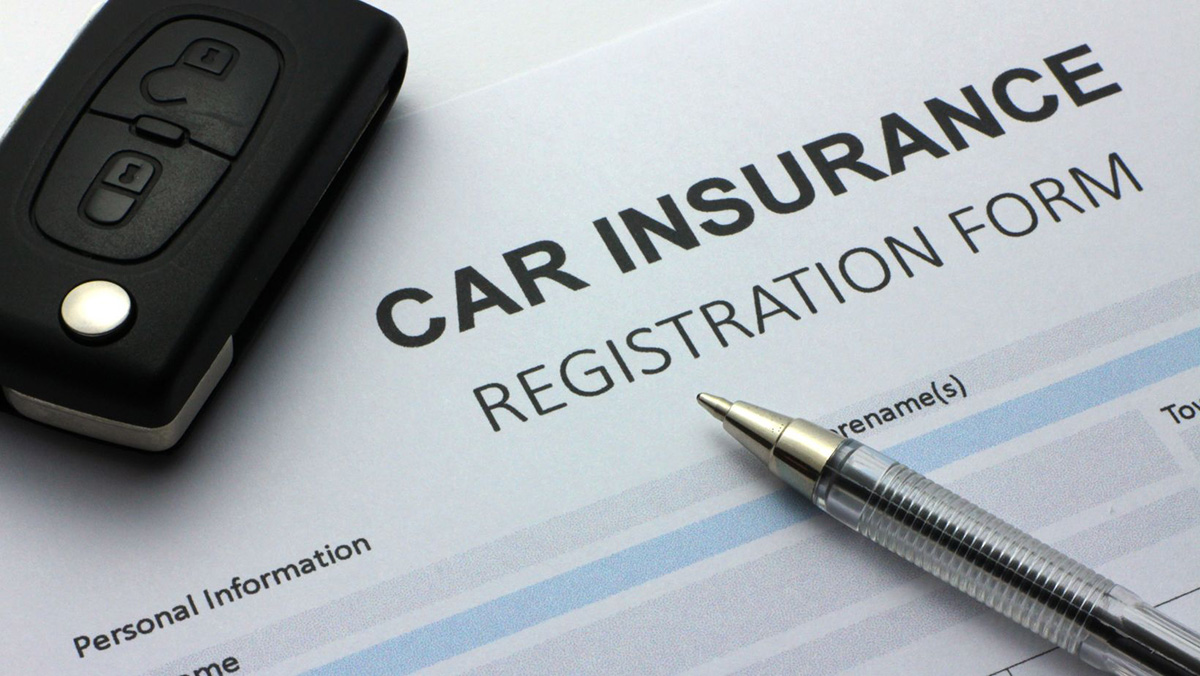

Finance
How To Get Someone’s Insurance Information
Published: November 5, 2023
Learn how to obtain someone's insurance information for your financial needs. Find out the steps to follow and ensure you're well-prepared.
(Many of the links in this article redirect to a specific reviewed product. Your purchase of these products through affiliate links helps to generate commission for LiveWell, at no extra cost. Learn more)
Table of Contents
Introduction
Being involved in an accident can be a stressful experience, and one of the most important pieces of information you need is the insurance information of the party at fault. Whether you were in a car accident, a slip and fall incident, or any other type of accident where someone else’s negligence caused harm, obtaining their insurance information is crucial for filing a claim and seeking compensation for your damages.
In this article, we will guide you through the process of getting someone’s insurance information after an accident. We will provide step-by-step instructions to help you gather the necessary details and navigate through the potentially overwhelming aftermath. By following these steps, you can ensure that you have the essential information to pursue your claim effectively.
Please note that the specific procedures may vary depending on the type of accident and your jurisdiction. It’s always advisable to consult with an attorney to understand the relevant laws and regulations in your area.
Remember, the priority after an accident is to ensure your safety and the safety of others involved. If you or someone else requires immediate medical attention, please prioritize seeking medical help before focusing on obtaining insurance information.
Now, let’s dive into the step-by-step process of how to get someone’s insurance information after an accident.
(Step 1) Gathering Information
Immediately after an accident, it’s crucial to gather as much information as possible about the party at fault. This information will help you when it comes time to file a claim with their insurance company. Here are the essential details you should collect:
- Name and Contact Information: Obtain the full name, phone number, and email address of the responsible party. This will make it easier to communicate with them and their insurance company.
- Driver’s License Number and License Plate Number: Take note of the driver’s license number and the license plate number of the vehicle involved in the accident. These details are vital for identifying the responsible party and their vehicle.
- Insurance Company and Policy Number: Ask the at-fault party for their insurance company’s name and policy number. This information is essential for filing a claim and seeking compensation for your damages.
- Vehicle Description: Make a note of the make, model, color, and any distinguishing features of the other party’s vehicle. This information can help insurance adjusters and authorities identify the responsible vehicle during the claims process.
- Location and Date of the Accident: Write down the exact location and date of the accident. This information will be necessary when filing a claim and providing accurate details about the incident.
- Details of the Accident: Take some time to record the details of the accident while they are fresh in your memory. Include factors such as weather conditions, time of day, and any other relevant details that may have contributed to the accident.
Remember, it’s important to gather this information calmly and respectfully. Avoid admitting fault or engaging in confrontations with the other party. Focus on collecting the necessary details that will assist you in the claims process.
Once you have gathered this information, it is time to move on to the next step: documenting the accident scene.
(Step 2) Documenting the Accident Scene
After ensuring everyone’s safety and gathering the necessary information, it is crucial to document the accident scene. This will provide crucial evidence to support your claim with the insurance company. Here are the steps to follow:
- Take Photographs: Use your phone or a camera to capture photos of the accident scene from different angles. Include close-ups of any damages to vehicles, property, or injuries. Document skid marks, traffic signs, and other relevant details that can help establish what happened.
- Draw a Diagram: Draw a simple diagram of the accident scene, clearly showing the positions of the vehicles involved, traffic signs, and any other relevant objects. This visual representation can assist in explaining the sequence of events later on.
- Collect Contact Information of Witnesses: If there were any witnesses to the accident, gather their names and contact information. Witnesses can provide independent accounts of the incident and support your claim if needed.
- Record Statements: If the other party involved in the accident admits fault or makes any statements about the incident, write down their words verbatim. These statements can be valuable evidence in establishing liability.
- Document Weather Conditions and Road Hazards: Note any weather conditions, such as rain, snow, or fog, that may have contributed to the accident. Also, be aware of any road hazards, such as potholes or obstructions, that may have played a role.
- Seek Surveillance Footage: If the accident occurred near businesses or residential areas with surveillance cameras, inquire if they have any footage of the incident. This footage can serve as additional evidence to support your claim.
Remember, when documenting the accident scene, accuracy and attention to detail are key. This evidence will be crucial when negotiating with the insurance company and establishing fault. Store the photos, diagrams, and other documentation safely, as they will be essential during the claims process.
Once you have thoroughly documented the accident scene, it’s time to proceed to the next step: obtaining witness statements.
(Step 3) Obtaining Witness Statements
Witness statements can significantly strengthen your case when it comes to establishing fault and proving liability. If there were any witnesses to the accident, it’s essential to obtain their statements as soon as possible. Here’s how you can go about it:
- Approach Witnesses Calmly: Approach the witnesses involved in the accident respectfully and calmly. Explain that you are seeking their account of the incident.
- Ask for their Cooperation: Politely request that they provide a statement about what they witnessed. Emphasize the importance of their testimony in helping resolve the case.
- Record their Statements: Use a pen and paper, or a voice recorder app on your phone, to accurately record the witness statements. Make sure to ask open-ended questions to allow them to provide detailed information.
- Include Witness Contact Information: Along with their statements, collect the witnesses’ contact information, such as their full name, phone number, and email address. This will be useful if further clarification or testimony is needed during the claims process.
- Request that Witnesses Sign the Statements: To validate the statements and make them legally binding, ask the witnesses to sign and date their statements. This will make it more credible during negotiations with the insurance company or in court, if necessary.
- Thank the Witnesses: Show gratitude to the witnesses for their cooperation and willingness to provide their statements. A small thank you can go a long way in maintaining a positive relationship with them.
Remember, witness statements can significantly impact the outcome of your claim. They can provide an unbiased account of the accident and support your version of events. Be sure to keep the witness statements safe along with other documentation related to the accident.
Once you have obtained witness statements, it’s time to proceed to the next step: contacting the police.
(Step 4) Contacting the Police
When it comes to accidents involving property damage, injuries, or disputes over fault, it’s important to contact the police. Not only can they help manage the situation, but they will also provide an official report that can serve as valuable evidence for your claim. Here’s what you need to do:
- Assess the Need for Police Involvement: Evaluate the severity of the accident and the need for police intervention. If there are injuries, significant property damage, or if the other party is uncooperative, immediately call the police.
- Provide Accurate Information: When speaking with the police, clearly and accurately provide details about the accident. Describe the events leading up to the incident, any injuries sustained, and any witnesses present.
- Cooperate with the Police: Follow the instructions provided by the police officers and cooperate fully with their investigation. Answer their questions truthfully and provide any documentation or information they request.
- Request a Copy of the Police Report: After the police have completed their investigation, request a copy of the official police report. This report contains important details about the accident, including statements from involved parties and witnesses.
- Keep the Police Report Safe: Store the police report safely along with your other documentation. It is a crucial piece of evidence that will support your claim with the insurance company.
Having a police report can provide an unbiased account of the accident and help establish liability. Insurance companies often rely on police reports to assess the credibility of the claim and determine the extent of damages.
Remember, contacting the police is especially important if there are injuries involved or if the accident occurred on public property. Their involvement helps ensure your safety and provides an objective perspective on the incident.
With the police report in hand, you are now ready to proceed to the next step: reporting the accident to your insurance company.
(Step 5) Reporting the Accident to Your Insurance Company
After gathering all the necessary information and documents, it’s time to report the accident to your insurance company. Promptly notifying your insurance provider is essential to initiate the claims process and maximize your chances of receiving compensation for your damages. Follow these steps when reporting the accident:
- Contact Your Insurance Company: Reach out to your insurance company as soon as possible after the accident. Most insurers have a claims hotline or online reporting system for convenience.
- Provide Accurate and Detailed Information: When speaking with your insurance company, provide accurate and detailed information about the accident. Include the date, time, location, and a description of what happened. Be truthful and avoid exaggeration.
- Submit Supporting Documents: Submit all the documentation you have gathered, including the police report, photographs, witness statements, and any other relevant evidence. These documents will strengthen your claim and help the insurance company understand the circumstances surrounding the accident.
- Follow the Insurance Company’s Instructions: Your insurer will guide you through the claims process. Follow their instructions, provide any additional information they request, and meet any deadlines specified.
- Document All Communication: Keep a record of all communication with your insurance company, including the date, time, and the name of the representative you spoke with. This documentation can be valuable in case of any disputes or discrepancies during the claims process.
- Keep Copies of Correspondence: Make copies of all correspondence exchanged with your insurance company. This includes emails, letters, and any other written communication. These copies will serve as evidence in case you need to refer back to them in the future.
Remember, it’s vital to report the accident to your insurance company promptly. Delaying notification could potentially result in complications or even a denial of your claim. Cooperate fully with your insurance company throughout the process to ensure a smooth resolution.
Once you have reported the accident to your insurance company, it’s time to consider seeking legal assistance if needed, which we will discuss in the next step.
(Step 6) Seeking Legal Assistance if Needed
In some cases, it may be necessary to seek legal assistance to navigate the complexities of a personal injury claim or insurance dispute. If you encounter challenges or feel overwhelmed by the claims process, consulting with an experienced lawyer can provide valuable guidance and support. Consider the following steps when seeking legal help:
- Research and Choose a Reputable Attorney: Look for a lawyer who specializes in personal injury or insurance claims. Research their experience, track record, and client reviews to ensure they have the expertise necessary to handle your case.
- Schedule a Consultation: Contact the attorney and schedule an initial consultation. This meeting will give you the opportunity to discuss your case, ask questions, and evaluate whether the attorney is the right fit for your needs.
- Provide Documentation: During the consultation, provide the attorney with all the relevant documentation and information you have gathered. This will help them assess the strength of your case and provide guidance on the best course of action.
- Discuss Fee Arrangements: Clarify the attorney’s fee structure and payment arrangements upfront. Personal injury attorneys often work on a contingency basis, meaning they only get paid if they successfully recover compensation on your behalf.
- Fully Cooperate with Your Attorney: Once you decide to hire an attorney, cooperate fully with their instructions and requests. Provide any additional information or documents they need and keep them updated on any developments related to your case.
- Trust the Legal Process: Your attorney will guide you through the legal process, including negotiations with the insurance company, filing a lawsuit if necessary, and representing your interests in court. Trust their expertise and follow their advice to maximize your chances of a favorable outcome.
Seeking legal assistance can empower you during the claims process and ensure your rights are protected. An experienced attorney will advocate for your best interests and help you navigate any legal hurdles that may arise.
Remember, it’s important to act quickly when seeking legal assistance, as there may be time limitations for filing a claim or initiating legal proceedings. The earlier you involve an attorney, the more time they have to build a strong case on your behalf.
With these steps completed, you have successfully navigated the process of gathering someone’s insurance information after an accident. By knowing how to gather information, document the scene, obtain witness statements, contact the police, report the accident to your insurance company, and seek legal assistance if needed, you are well-prepared to handle the aftermath of an accident. Remember to stay calm, stay safe, and always prioritize your well-being throughout this process.
+
Conclusion
Obtaining someone’s insurance information after an accident is a crucial step in protecting your rights and seeking compensation for your damages. By following the steps outlined in this guide, you can navigate the process effectively and maximize your chances of a successful claim. Remember the key steps:
- Gather the necessary information, including the responsible party’s name, contact information, driver’s license number, and insurance details.
- Document the accident scene by taking photographs, drawing a diagram, and collecting witness statements.
- Contact the police, provide accurate information about the accident, and request a copy of the police report.
- Report the accident to your insurance company, providing them with all the relevant documents and information.
- Consider seeking legal assistance if needed to navigate the claims process or handle any disputes that may arise.
Remember, prompt action is essential in the aftermath of an accident. Prioritize safety, gather information, document the scene, involve the authorities, report to your insurance company, and seek legal assistance if necessary. By following these steps, you can protect your rights, gather the evidence needed to support your claim, and enhance your chances of receiving fair compensation for your damages.
Lastly, always consult with an attorney who specializes in personal injury claims to understand the specific legal requirements and options available to you based on your jurisdiction and the circumstances surrounding your accident. They can provide personalized advice and guide you through the process to ensure you have the best possible outcome.














